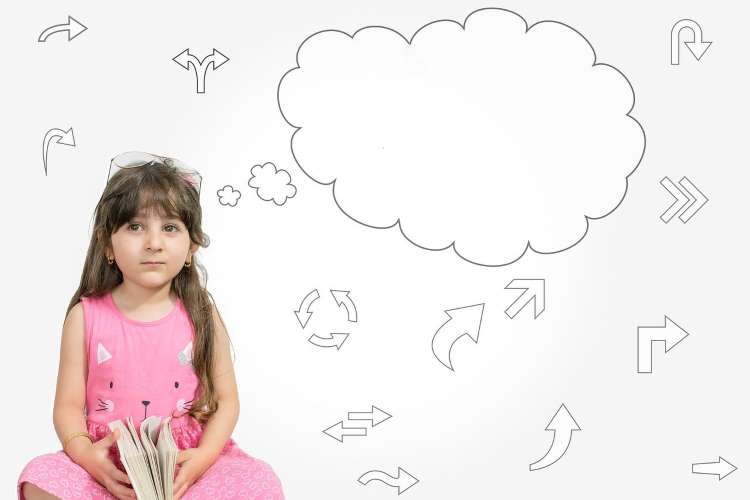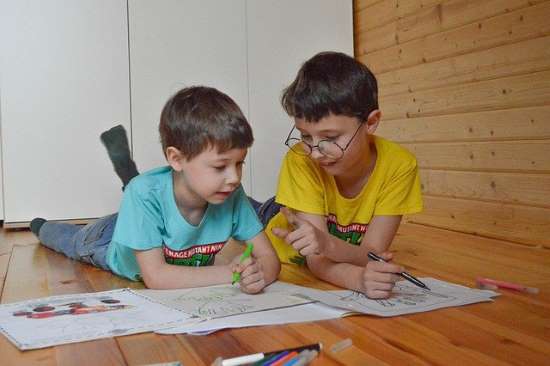Social development is a sub-branch of any of the development sectors you take up. Being socially active says that you are being involved within the society. Having friends is also a part of social development. Going to a friend’s birthday is also a part of social development.
So, social development is connected to intellectual and emotional development.
Being stressed out and having some self-confidence is necessary to develop some socialism. Proper social development is required when a child begins to go to school. Let us know more about this term.
What is Social Development?
Social development is responsible for maintaining the prosperity of every person in society. So that they can reach their maximum capacity. The achievement of humanity is connected to the well-being of every single resident. Therefore, social advancement implies investing in individuals. Social development also includes these given jotted bullet points:
1. Language skills:
A kid who handles his/ her language in society also comes under social development—language and communication help develop the bond with another person.
2. Self-esteem:
When a kid doesn’t have friends, he/ she becomes frustrated, so it’s better to have a healthy circle for a healthy personality.
3. Resolving conflicts:
How a kid resolves the conflicts with his/ her friends also helps him cope with the developing stage.
4. Positive attitude:
Having positivity regarding anything going on and, most importantly, having the“I can do it” self-confidence builds a positive attitude.
Also Read: How to Observe Social and Emotional Development Lacking in Kids: Get to Know Your Kid
Social and Emotional Development in Early Childhood
Social-emotional development helps kids to indulge in some peer relationships, humanity. Gaining confidence to stand in a society is a part of social-emotional development. Social and emotional development are correlated and have many relations with each other.
The main features of emotional development include the capacity to distinguish and identify one’s sentiments, read and appreciate emotional states in others, manage compelling feelings, manage behavior, and generate sympathy for others.
Let’s see how to build these feelings among the youngsters.
Healthy Conversation with Adults
- Conversation with adults is the first and foremost part of a child’s day-to-day life. A 3 years old child has the capabilities to distinguish between the faces of unfamiliar adults.
- The foundation that portrays Interactions with Adults and Relationships with Adults are interrelated. Together, they give an image of solid social-emotional development based on a friendly climate set up by adults.
- Kids foster the capacity to react to adults and engage with them first through predictable communications with guardians or other caring adults at home and outside the home.
Relation with Adults
- Close relations with adults who give steady nurturance give strength to kids’ ability to learn and create. In addition, associations with parents, other relatives, parental figures, and teachers are vital to children’s social-emotional development.
- These unique connections impact the child’s arising self-appreciation and understanding with others. Children use relationships with adults from numerous perspectives, such as they feel protected, assist with emotional regulations, and social endorsement or support.
Conversation with Peers
- Kids interact utilizing basic behaviors in early childhood, for example, looking at or contacting another kid.
- Children’s social conversation with peers expands in complexity from engaging in monotonous or routine to and fro interactions with peers to participating in exercises like building squares blocks together.
- Through conversations with peers, children find their interests in others and learn about social behavior/social communication.
Identification of Relation
- Children’s social-emotional improvement includes a rising consciousness of self as well as other people. Little Children show this foundation in various manners. For instance, they can react to their names, highlight their body parts when asked, or name their relatives.
- Through an emerging understanding of others in their social climate, youngsters acquire knowledge of their roles inside their families and networks. They additionally become mindful of their preferences and qualities, and while the kid is finding out about their place in different connections, they are further fostering feelings.
A two-year-old doesn’t have a decent handle on their feelings, and however, when a kid is six, they understand their emotions better. They also see how to control their feelings—even to the point that they may put on an unexpected sensation compared to what they are feeling. Further, when a kid is six years of age, they comprehend that others have feelings and that the entirety of the emotions associated with a circumstance (theirs and other people’s) should be considered.
So these were the ways of social and emotional development in children. Thus social development in early childhood arises. Now let us learn about physical, cognitive, and social development in early childhood.
What is Physical, Cognitive, and Social Development in Early Childhood?
Physical Development
In early childhood, the body’s development is quick. Infants weigh somewhere between 2 to 3 kgs, and an infant’s weight ordinarily doubles in a half year and triples in a single year. By two years of age, the weight will have increased a lot.
So we can expect that a two-year-old ought to weigh somewhere in the range of 15 to 20 kgs. The average length is 19.5 inches, expanding to 29.5 inches by a year and 34.4 inches by two years of age.
Motor development happens efficiently as babies move from reflexive responses (e.g., sucking and establishing) to develop motor working further. For example, babies initially figure out how to hold their heads up, at that point to sit with help, and afterward to sit without support, followed later by creeping and afterward walking.
Motor abilities refer to our capacity to move our bodies and control objects. Fine motor abilities center around the muscles in our fingers, toes, and eyes and empower coordination of little activities (e.g., getting a handle on a toy, composing with a pencil, and utilizing a spoon). Net motor abilities center around huge muscle bunches that control our arms and legs and include more extensive developments.
Therefore we can see a baby’s physical and motor development.
About Cognitive Development
Notwithstanding rapid physical development, little youngsters additionally show the development of their intellectual capacities.
It is believed that kids’ capacity to get objects, for example, discovering that a clatter makes a clamor when shaken—were cognitive skills that grow gradually as a youngster develops and communicates with the climate.
Cognitive abilities extend in the center and late youth (6–11 years of age). Manners of thinking become more coherent and coordinated when managing important information. Kids at this age learn ideas like the past, present, and future, enabling them to plan and run after objectives.
Furthermore, they can deal with complex thoughts like expansion and deduction and circumstances and logical results connections. Nonetheless, youngsters’ capacities to focus will, in general, be highly restricted until they are around 11 years of age.
Also Read: What is Children’s Social Development? A Quick Guide
Conclusion
The developmental changes that regularly happen in early childhood have been told to you. Critically, every development area is entwined with the other–physical, social, emotional, and cognitive development in your child. So parents should take care of their child in early childhood.








